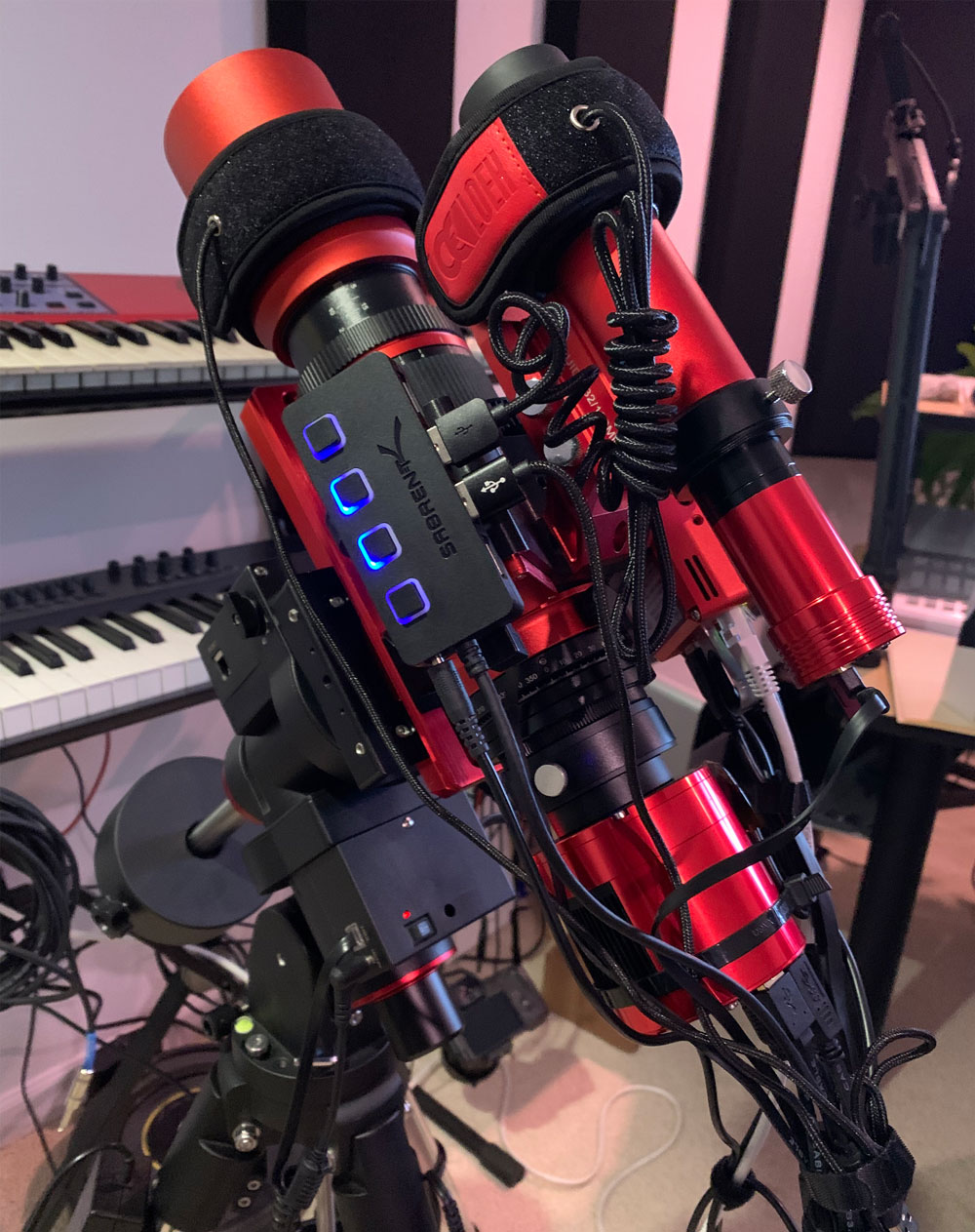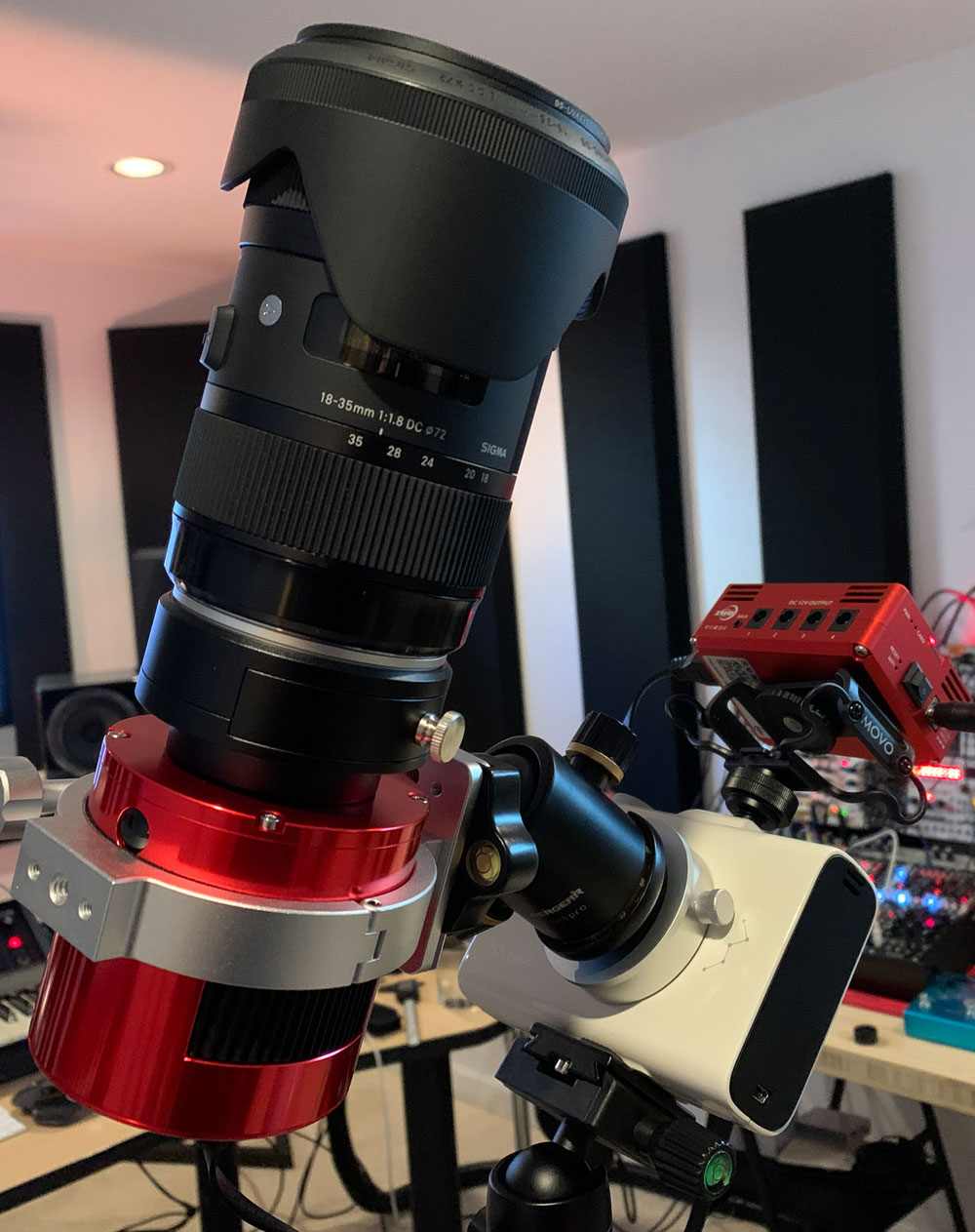I’m especially interested in nebulae. They are present across the skies and yet hidden. Giant regions of dust and gas are nurseries and birthplaces for new stars, or remnants of those that have died. Extreme gravity, energy and once decoded, beauty. Every time I begin to unravel the data, I am humbled.
Final images include upwards of 10+ hours of total actual acquisition/exposure time, and various filters are used. Photons are slowly filling the pixel wells on the specially cooled camera sensor as I’m shooting in the dark. All of the shots require additional calibration exposures that are taken at the end of the night. These are used to subtract sensor noise, vignetting, random dust that might land on the lens through the night etc. All of the frames are combined and “stacked” into the final image. But it doesn’t stop there.
Then comes the countless hours to process the data properly. The data (.fits files) that I initially start working with is black except a few faint stars. Background extraction and several other steps are performed before I begin to carefully “stretch” the image across the histogram to coax out the details of the target itself. I use software built specifically for this application called Pixinsight. I appreciate and embrace their methodology of staying as true to the details of the object as possible. I will do some final overall balancing using Lightroom or Photoshop.




















